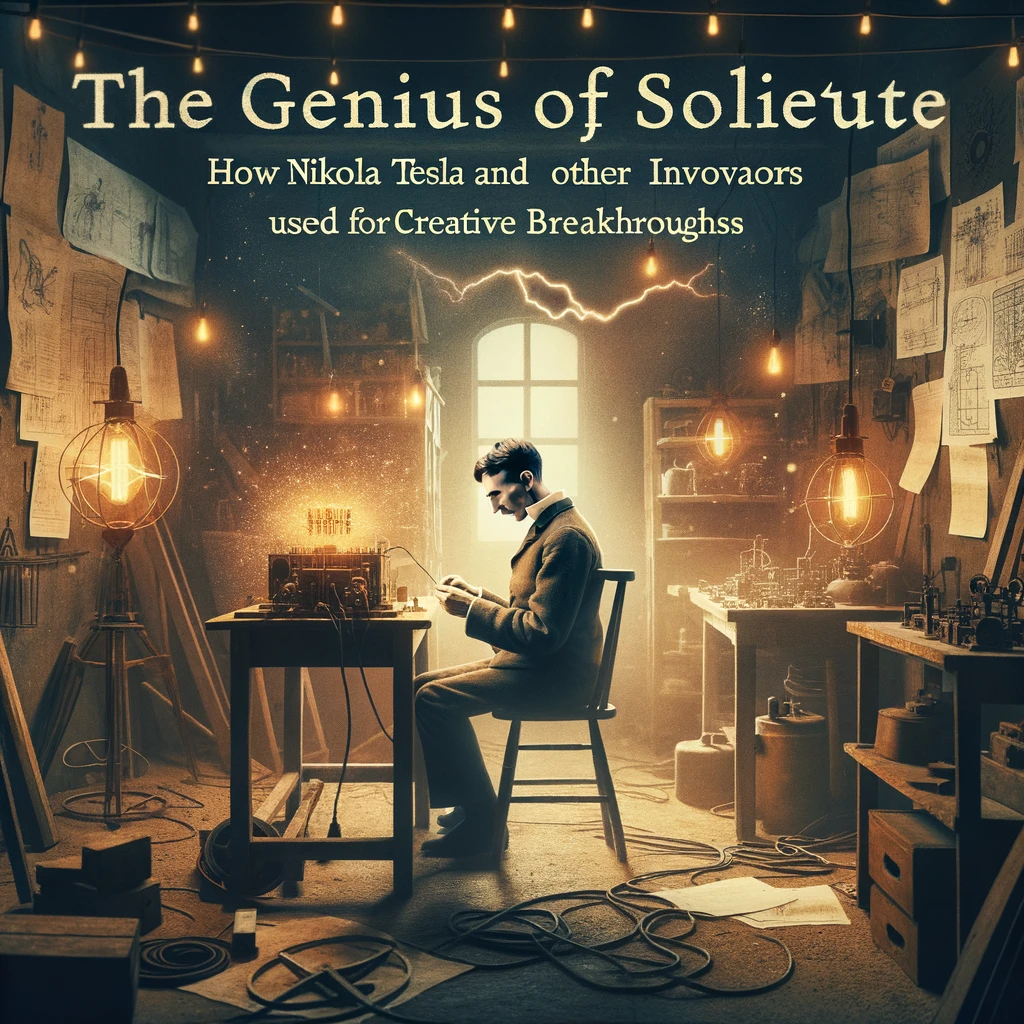
The Genius of Solitude: How Nikola Tesla and Other Innovators Used Seclusion for Creative Breakthroughs

Introduction
Nikola Tesla, one of the most prolific inventors in history, was not just a master of electricity and magnetism; he was also a staunch advocate for the virtues of seclusion and solitude. Tesla believed that these states were crucial for fostering creative thinking and innovation. This article aims to delve into Tesla’s philosophy on solitude, its benefits for creative thinking, and how one can harness it effectively. The target audience includes teachers, students, and researchers interested in the intersection of solitude and creativity.
The Tesla Paradigm: Why Seclusion and Solitude Matter
The Overstimulated Mind
In today’s hyper-connected world, we are incessantly bombarded with stimuli—be it social media notifications, emails, or interpersonal interactions. This constant influx can cloud our judgment and impede the creative process.
The Tesla Philosophy
Nikola Tesla, a visionary who gave us the alternating current (AC) system, the Tesla coil, and laid the groundwork for wireless communication, was a firm believer in the power of solitude. He posited that seclusion provides the mental space required for groundbreaking ideas to germinate.
Practical Steps to Harness Solitude for Creativity
Finding Your Sanctuary
Identify a quiet space devoid of distractions. Libraries, coffee shops, or even a secluded corner of your home can serve as ideal sanctuaries for thought.
Digital Detox
Switch off or mute all electronic devices to ensure an uninterrupted flow of thought. Tesla, who lived in a time before smartphones, would likely endorse this modern adaptation of his philosophy.
Mindfulness and Focus
Engage in deep breathing exercises or brief meditation to clear your mind. Once you achieve a state of calm, you can proceed to brainstorm or ponder over complex problems.
The Wandering Mind
Don’t hesitate to let your mind drift. Tesla himself was known for his ‘thought experiments,’ which often led to his most revolutionary ideas.
Real-World Applications: Solitude in the History of Innovation
Isaac Newton and the Plague
During a period of isolation due to the plague, Isaac Newton formulated his laws of motion and gravity, forever altering our understanding of the physical world.
Albert Einstein and the Swiss Patent Office
Albert Einstein, while working in relative solitude as a patent clerk, developed the theory of relativity, a cornerstone of modern physics.
Conclusion
The practice of solitude and seclusion has been a common thread among some of the world’s most innovative minds, from Nikola Tesla to Isaac Newton and Albert Einstein. By consciously incorporating periods of solitude into our lives, we can create an environment conducive to creative thinking and problem-solving. This article serves as both a testament to the transformative power of solitude and a practical guide for those wishing to harness its potential for creative endeavors.
By understanding and applying the principles of solitude, we can unlock new dimensions of creativity and innovation, enriching not just our own lives but also contributing to the collective knowledge of humanity.